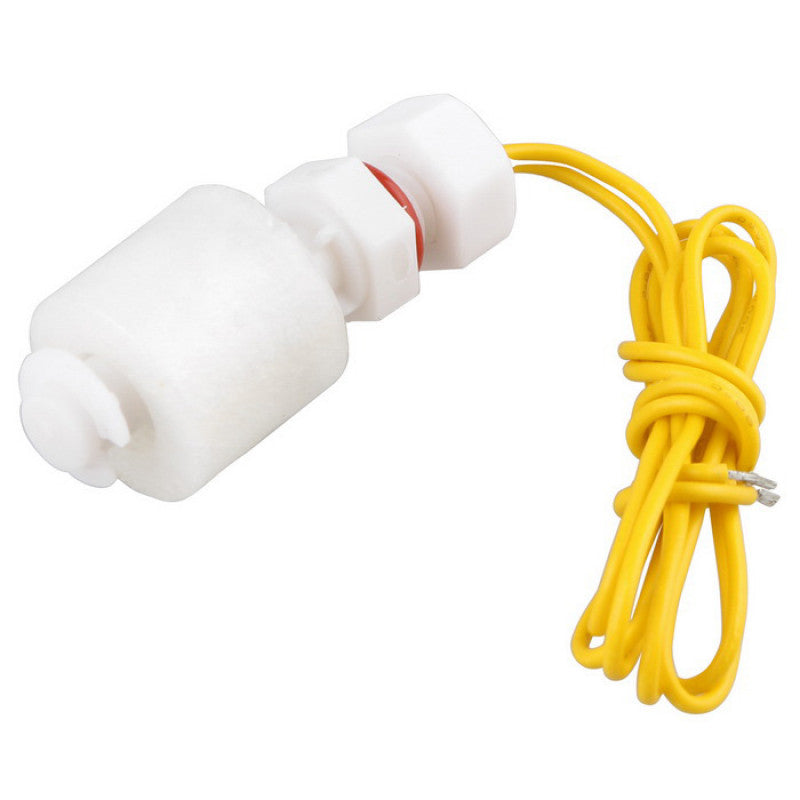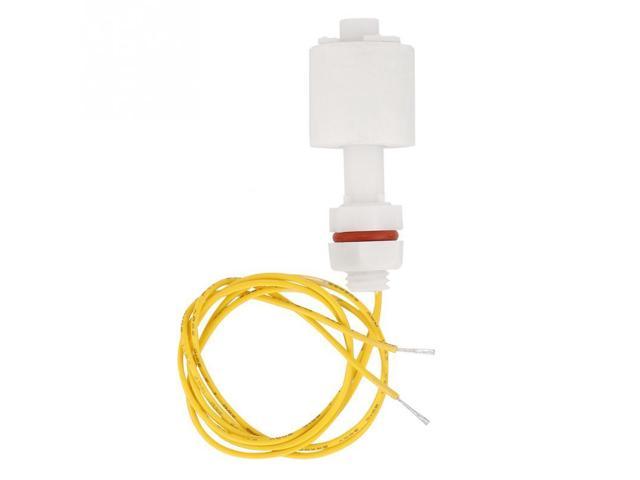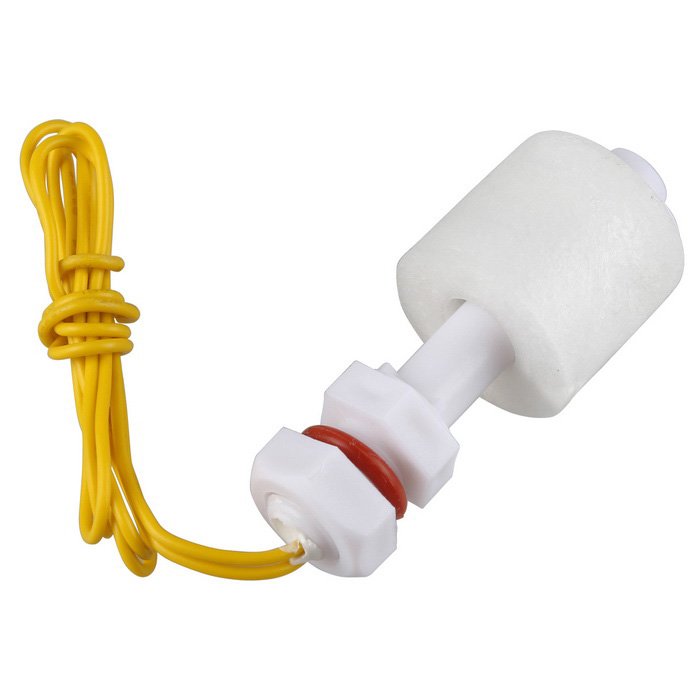Description
P 45 Small Float Level Control Switch Plastic Float Switch
A float switch is a device used to sense the level of liquid within a tank, it may actuate a pump, an indicator, an alarm, or another device.
A float switch is a device used to sense the level of liquid within a tank. The switch may actuate a pump, an indicator, an alarm, or another device. Use them with hydroponics, saltwater tank, freshwater tank, gardening, aquariums for power head control, pet bowls, fish tanks, filtration, heating, pumps, ponds, basement alarms, boats, air condition drain pans, pressure washers, carpet cleaning machine, reef aquarium, fluid control, ice machines, coffee pots, marine, automotive, automobiles, tropical fish tanks, evaporator coils, condensation line, in relays, or whatever your project may be. It can be easily converted from normally open to normally close by inverting the float.
Note: because the current that the switch can carry is much little(0.5A), you must use a relay or contactor when it is connected by a load, relay and contactor are not included here.
Specifications:-
- Cable Length: 30.5(cm)
- Maximum Load: 50 W
- Max Switching Voltage: 100V DC
- Minimum Voltage: 250V DC
- Maximum Switching Current: 0.5 A
- Max Load Current: 1.0 A
- Max Contact Resistance: 0.4 ΩTemp Rating: -20~ 80 degree
Applications:-
- Household Equipment such as overhead water tanks, Water purifiers.
- Use them with hydroponics, saltwater tank, freshwater tank, gardening, aquariums for power head control, pet bowls, fish tanks, filtration, heating, or whatever your project may be. Up float switch Contains no mercury Product.
How Magnetic Reed Liquid Level Sensors Work:-
The purpose of a float switch is to open or close a circuit as the level of a liquid rises or falls. Most float switches are "normally closed," meaning the two wires coming from the top of the switch complete a circuit when the float is at its low point, resting on its bottom clip or stop (for example, when a tank is dry).
Most float switches utilize a magnetic reed switch to open or close the circuit. The reed is encased in a glass tube, which is cemented into a plastic or stainless steel stem with epoxy. The illustration to the left demonstrates how a magnet can be used to open or close a circuit by moving it closer to or farther away from a reed switch.
When the magnet comes close to the two contacts, they draw together and touch, allowing the current to pass through. When the magnet is moved away, the contacts demagnetize and separate, breaking the circuit.
In a float switch, the magnetic reed switch is hermetically sealed in a stem, most often made from plastic or stainless steel. The float encases a sealed magnet, which moves up and down the length of the stem as a fluid level rises and falls.
As the magnet passes by the contacts in the encased reed switch, they draw together and complete a circuit between the two lead wires.
The operation shown can usually be reversed by removing the bottom clip from the switch, inverting the float, and replacing the clip. When this change is made, the switch circuit will be open when the float is resting on the bottom clip and closed when the float rises.
Properly used, float switches can deliver millions of on/off cycles, for years of dependable operation. Failures are normally due to overloading, frequently caused by spiking voltage. Before designing a circuit that uses a float switch, be sure to read our Technical Page on Spiking Voltage & Float Switches.
* Product Images are shown for illustrative purposes only and may differ from the actual products.



